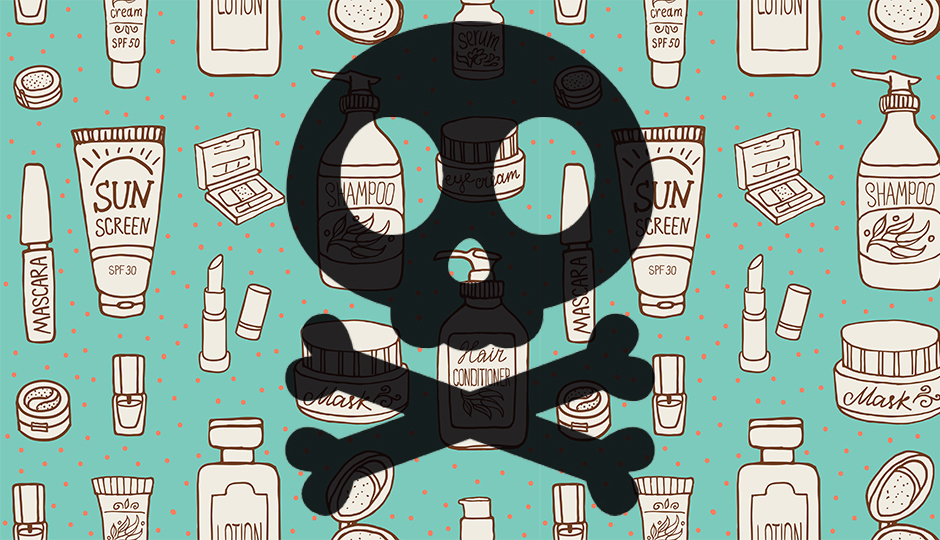The Toxic Skincare Ingredients Hiding in Your Beauty Products

Buyer beware: That’s some scary stuff you’re putting on your skin every day. | iStock.
We’ve all heard the cautionary tales of secretly damaging ingredients in everything from your shampoo to your lipstick. But how are you supposed to discern the good products from the bad when the ingredients listed on the back read more like a biochemical engineering dissertation? We connected with industry professionals, from estheticians to med spa owners to advocates on Capitol Hill. What started as a look into potentially harmful skincare ingredients hiding in our everyday beauty products turned into a full-blown beauty industry investigation, with a crash course in chemistry. It would take a book to cover the greater issue, but here are some basic rules to live by when navigating the beauty aisle to decrease your exposure to potentially harmful chemicals on a daily basis.
Can beauty products used on the surface level of our skin really cause damage? Yep. Your skin is porous; it absorbs chemicals into your bloodstream quickly. Why do you think Nicotine patches are a thing? The chemicals that we put on our bodies wind up inside our bodies.
So why are they still for sale? Isn’t this regulated? You’d think products wouldn’t be for sale if they were unsafe for us, right? Wrong. The last legislation regulating the health risks of products on the consumer market was passed in 1938—that was before WWII. Since then, over 80,000 synthetic chemicals have been introduced into products since then, yet only five percent of those chemicals have been tested for safety. We don’t know if most of them are toxic. What’s worse is that the synthetic chemicals we do know to be pre-carcinogenic (cancer-causing) are still used in thousands of products on the market. According to the National Cancer Institute, “Approximately 39.6 percent of men and women [in the United States] will be diagnosed with cancer at some point during their lifetime.” While that rate is going down, it’s still a sizable number affecting the people around us—parents, friends, coworkers, kids.
Why isn’t the FDA stepping in to eradicate known toxic skincare ingredients? Many see governmental regulation as a constitutional infraction, believing that we should have the freedom to choose the products we use—even if those products are toxic. (Case in point: cigarettes.)
What exactly should I avoid? We’re not trying to scare you into overhauling your beauty arsenal—that can be a tall and expensive order. We get it. So long as this article makes you think twice about buying something, if it’s the reason you bring your skincare products to your next derm visit to decode the ingredients listed, we’ll consider it a success. Here are five easy swaps to stop the gradual, everyday exposure to potentially harmful skincare ingredients.
- Say goodbye to sunscreens with oxybenzone, which can have hormone-like effects in the body. Dr. Lisa Espinoza of La Chele Medical Aesthetics suggests instead reaching for sunblock made with zinc or titanium oxide—it’s great for sensitive skin and will also cover you from both UVA and UVB exposure. For more info, see here.
- Throw away moisturizers and serums using mineral oil. It’s a petroleum byproduct which coats the skin like liquid plastic that solidifies. Aside from clogging your pores and offering no benefit the skin, technical grade mineral oil has been deemed cancer-causing. Traces of cosmetic-grade mineral oil have even been found in breast milk samples. Yikes! Naomi Fenlin of About Face Skincare recommends using moisturizers with ceramides—things like jojoba, other vegetable oils that won’t cause a seal on the skin. For more info, see here.
- If it foams, think twice. Naomi also warns about propylene glycol and butylene glycol, a ingredients added to products for the sole purpose of making them foam. Ick factor: The same detergents are used in car washes and engine de-greasers. They can cause anything from severe drying to skin irritation, so why mess with these toxic skincare ingredients at all? For more info, see here.
- “Fragrance” is just code for “tons of products we don’t have to tell you about.” Gregg Renfrew, founder and CEO of Beautycounter (a skincare line that lists over 1,500 banned ingredients the line never uses), warns, “Behind the word fragrance, there’s upwards of 100 ingredients not listed. It’s the one loophole in the industry. Companies are required to list ingredients, but not fragrance—and fragrance has many of the worst offenders in there.” At least with fragrance-free products you know what you’re dealing with. For more info, see here.
- Ditch shampoos with sulfate. Diana Yerkes, esthetician at Rescue Spa, says it’s only added to create lather, but the chemical actually strips the hair of its natural oils. It’ll be listed on your shampoo as Sodium Laureth Sulfate, Sodium Lauryl Sulfate, or Ammonium Laureth Sulfate. (It’s important to note that sulfates are irritants, not carcinogens.) For more info, see here.
